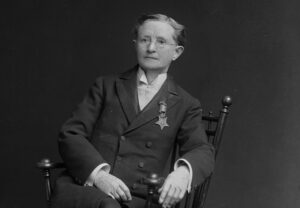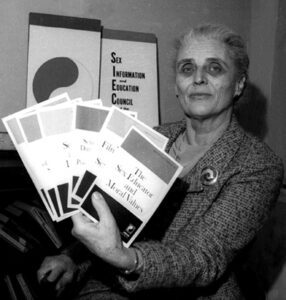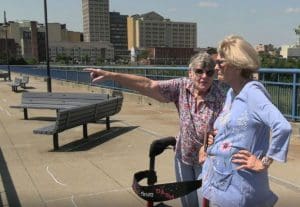St. John’s Residents Reflect on Women’s History
With March ending, National Women’s History Month comes to an end as well. Though largely overshadowed by St. Patrick’s Day, some of us were able to dabble in the prominence, or lack thereof, of women throughout written history. Given our location, most of us have heard of Susan B. Anthony, Harriet Tubman, Elizabeth Cady Stanton, and unfortunately, the list almost usually ends there for most. There have always been historic women; women of the past, women who make a difference, and women who leave their mark, but often, they are left out of history books or seldom the focus.

For example, Dr. Mary Walker. A surgeon, abolitionist, and prisoner of war during the Civil War era, was and is the only woman to be awarded the Medal of Honor; yet she is rarely spoken about in schools or in the discussion of powerful historical women. The Oswego native’s life and minor recognition raised a major question.
Why is women’s history so important?
We spoke to residents from across St. John’s to hear their take on historic women.
Angie Sinacore, St. John’s Home resident and retired health education teacher, said “without learning the history, you don’t know the whole story and can’t grow.”
When asked if Angie knew of Dr. Mary Walker, she said she remembered the name from college, but had another out of sight historic woman in mind. Angie said Mary Calderone, a physician and public health advocate from New York, inspired her.

Calderone, also known as the “Mother of Sex Education,” lived until 1998, and her passion for health education continues to inspire Angie.
“It is great to see the freedom of choice in professions nowadays, growing up if a woman wanted to become a doctor, the first question asked was ‘What’s wrong with her?’ because you could only really be a nurse, teacher, librarian, or solely a stay-at-home mom. But, now getting the education you need opens the possibilities for more opportunities, especially for women in traditional male-dominated jobs,” says Angie.
Prior to coming to St. John’s, Angie went along the coast of Ontario Lake with her husband, developing health programs for different counties, as well as writing textbooks. We asked Angie if she feels she has created an impact with her work, she humbly responded, “Yes, I think so.”

Doris Adamak, a resident at St. John’s Meadows, initially thought she could not add much to the discussion when asked about women’s history or if one specific woman inspired her.
“I was just a stay-at-home mom,” Doris replied. A few other residents who were sitting by interjected that there is a “lot of power in that, in raising a family.”
Doris noted that she had never thought of it (raising a family) like that, “but, yes it was hard work.”
Doris studied to be a nurse, though went on to raise her children. When her children turned 18, she began working in recreation for a senior living facility.
“I will say – that I didn’t find my passion until I was 44 years old,” Doris said. “It is never too late, you know, I was happy, but when my kids were ready to leave the nest, I just fell into something that gave me so much joy. I would tell young people that it’s never too late.”
Bea Slizewski was enjoying a cup of tea with Doris when we struck up our conversation. The Brickstone by St. John’s resident said she had never heard Dr. Mary Walker’s story, but what inspired her as a woman, was reading “The Feminine Mystique,” by Betty Friedan.
“It was published in 1963 and it was a revelation,” said Bea. “That is why I am a feminist.”
“I never wanted to be a nurse or a librarian, or a teacher, and that’s all we were aware of at that time, but I had to take care of my family, I was the breadwinner. But, I went back (to college) later on and got my degree when my daughter was eight.”
Bea got her degree in communications and worked in public relations for two major food companies. She advised young women and young people, in general, to “be independent, be as independent as possible. Try to do things on your own.”
We asked another Brickstone by St. John’s resident, Esther Smalline, which woman in history has inspired her. Esther said her granddaughter, Elena.
“To me,” Esther said, “Elena is very inspiring. She is graduating from Cornell Law School in May. She started out like any other little girl, interested in ballet.”
Esther explained how her granddaughter became a student at an out-of-state school for ballet when she was a freshman. “She did all her high school studies online while in ballet school, very dedicated.”
“There are so many opportunities for young women now, things have changed so much for the better,” Esther replied, when she was told that once Dr. Mary Walker was arrested for wearing men’s clothes in 1870.
Esther’s career ranged from working in a bank, owning a small art-mounting business, helping her husband open a pharmacy, working for the Jewish Community Center, as well as managing grant finances at the University of Rochester, all while supporting her parents and raising her children.
“You know, when you are going through it, you don’t feel as if you are being a strong person, because it is just something that you do,” Esther advised. “I guess I actually have accomplished quite a lot,” she said with a small grin.
Esther said it is important to learn women’s history and “that there are women out there that have done such wonderful things and that it is possible, even though there are people that think maybe women aren’t as capable as men, but they most certainly are capable.”
She finished by saying “there is so much you can do if you really set your sights on it.”
Even if not everyone knows of Mary Walker or Mary Calderone, or if they have not read “The Feminine Mystique,” there is still an opportunity to learn about the inspiring women around us. The women at St. John’s have all made a difference–whether it be raising a family, running a business, teaching, etc. You may not know their stories, but all you have to do is ask. Continue the important conversation we started. We definitely will. . .
